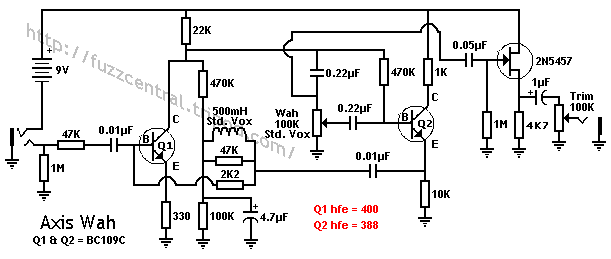mr_monster
Member level 4

- Joined
- May 10, 2012
- Messages
- 79
- Helped
- 0
- Reputation
- 0
- Reaction score
- 0
- Trophy points
- 1,286
- Activity points
- 1,964
I have a guitar pedal like this with some transistors in it, I would like to use different transistors (modern ones) which might have different gains but bias transistors so that the device will operate the same way (and will sound the same way). The networks for the bias are a bit off-textbook so if anyone can help I would greatly appreciate it! This is only for Q1 and Q2 off course.




